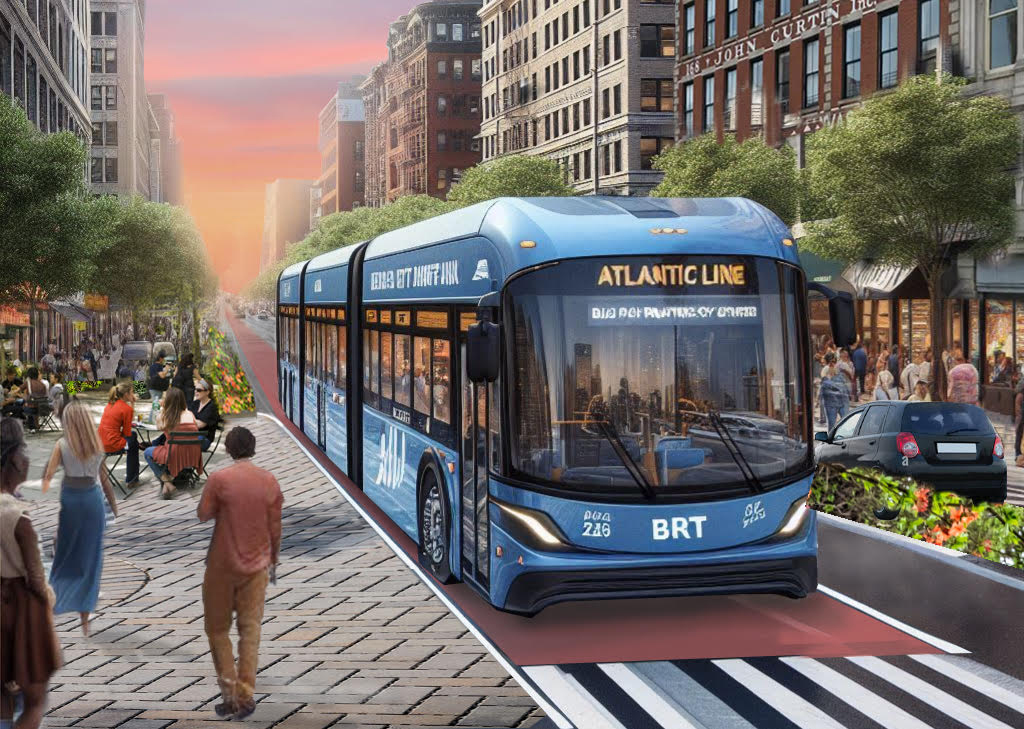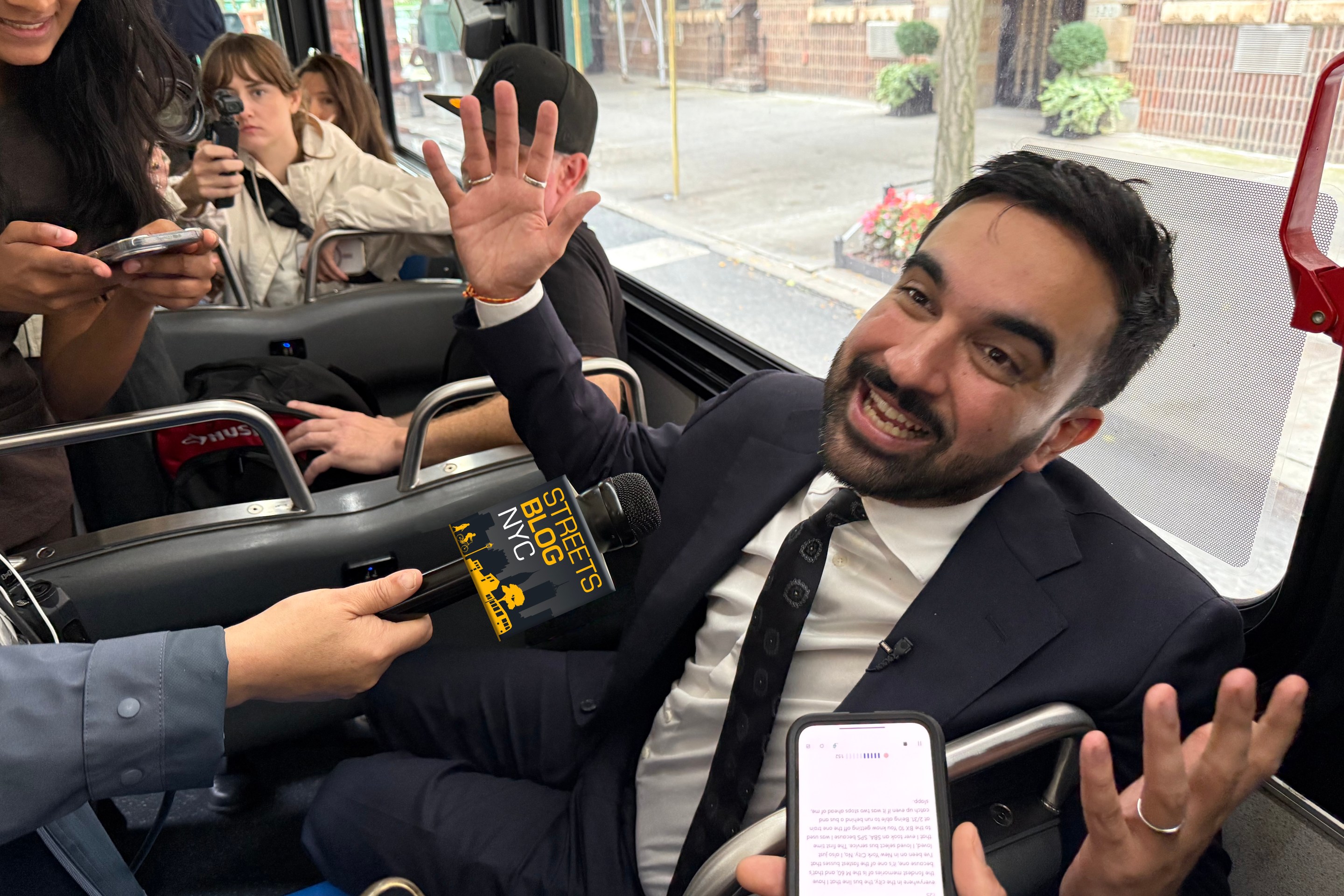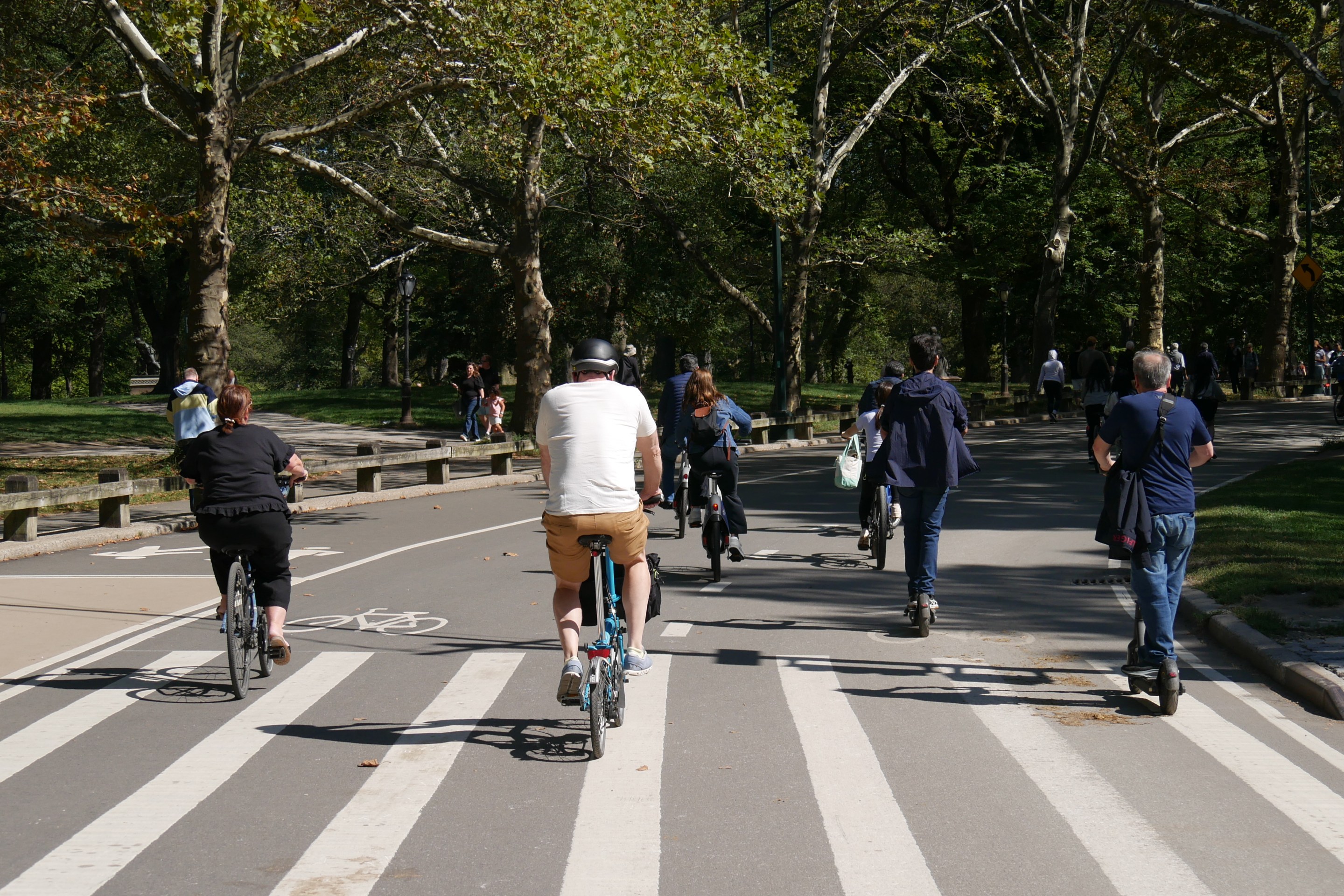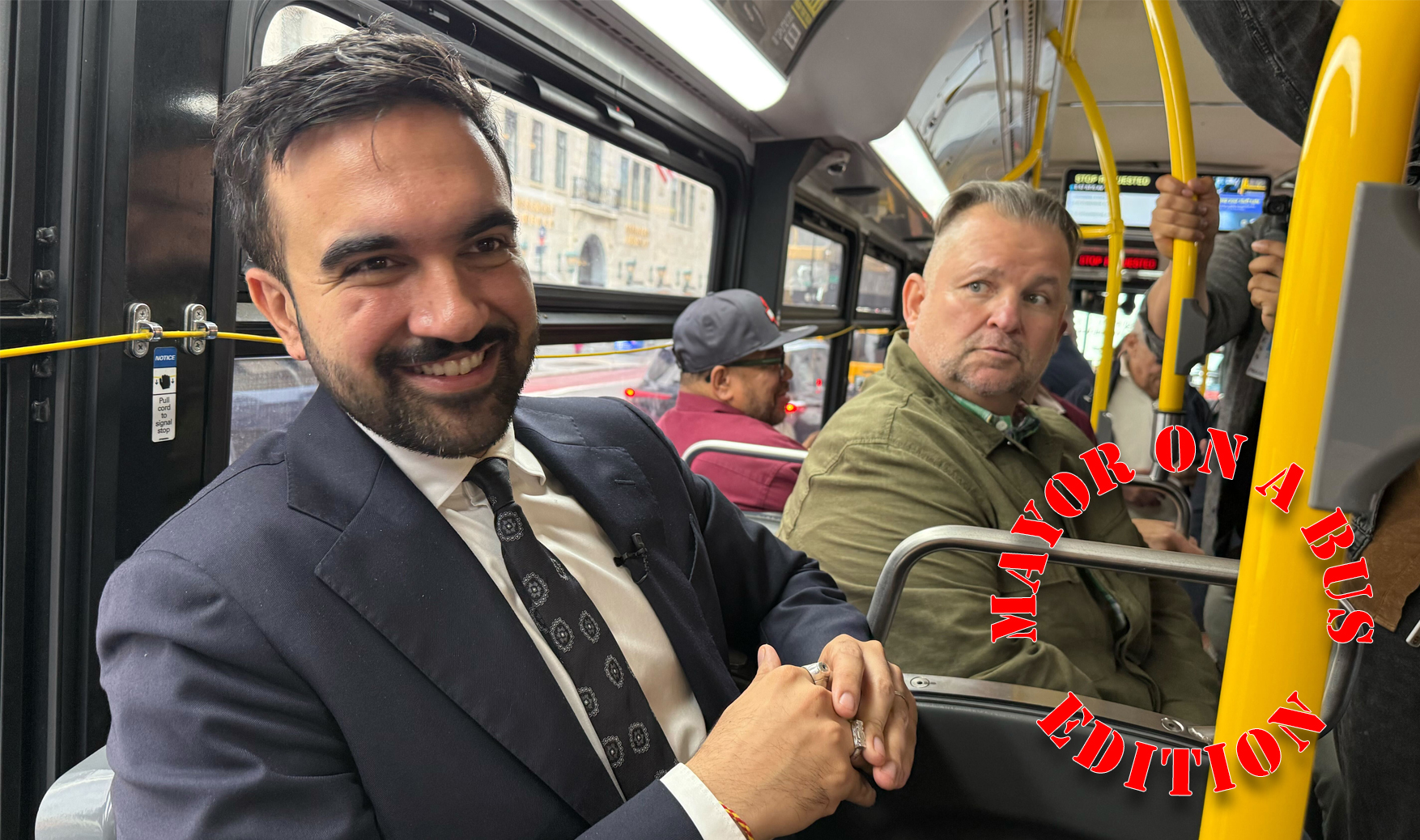Yes, everyone is talking about the city's slow-moving busway plans for Flatbush Avenue, but Brooklyn’s true great corridor for bus rapid transit is Atlantic Avenue.
An “Atlantic Line” like the one pictured above would form the spine of a pedestrian-priority boulevard, a place that people enjoy and value, not just pass through, linking new housing, retail, jobs and public spaces to the rest of the city.
And as a transit corridor, the east-west Atlantic Avenue touches many of Brooklyn’s most significant places, development opportunities, and underserved neighborhoods. A single, fast-moving line here, with a leg down the waterfront, would be transformative, making real improvements to the lives of Brooklynites.
First, let’s talk about Flatbush
My proposal for Atlantic Avenue comes as the city prepares to redesign Flatbush Avenue to provide a center-running busway.
The proposal has garnered wide-ranging support, but to my mind, it reinforces Flatbush as a “spoke” in the outdated “hub-and-spoke” model of urban infrastructure that is designed to get commuters to a city center only. Today, outer-borough connections are arguably more promising for developing neighborhoods where people can live, work, and play, with streets designed as valued public places, as well as for growth opportunities.
We don’t need more buses heading towards Manhattan, especially if the redesign doesn’t provide room for bike or micro-transit, given all the investments in bike infrastructure in Manhattan.
In short, Flatbush Avenue sits atop multiple subway lines, and is far from the borough’s greatest transit need. Atlantic has no comparable transit assets, severely constraining the opportunities for development of the borough.
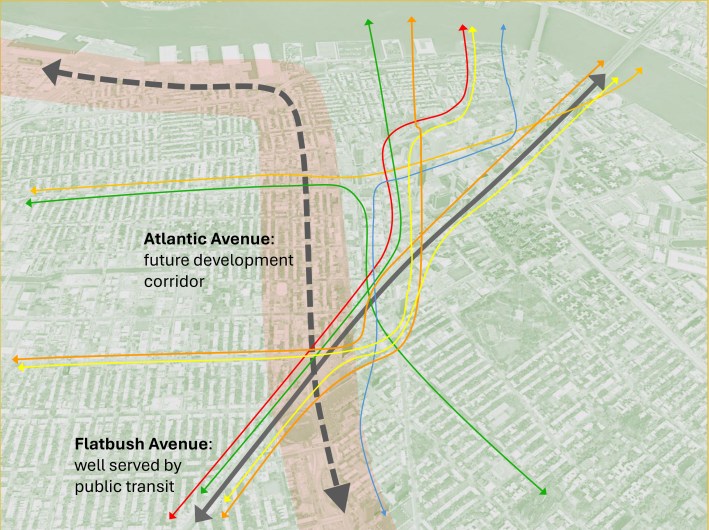
The 'Atlantic Line'
Unlike Flatbush Avenue, Atlantic Avenue is poorly served by public transit. Rather than reinforcing travel towards the core, Atlantic skirts around downtown Brooklyn to connect major assets and opportunities within the borough. These include the recently approved Atlantic Avenue Mixed-Use Plan — a development plan promising 4,600 new residential units. The plan includes upgrades to the Franklin Avenue station on the A/C line, two blocks north of the plan area, but the main problem is that there is still no mass-transit connection – a challenge that an Atlantic Line would overcome.
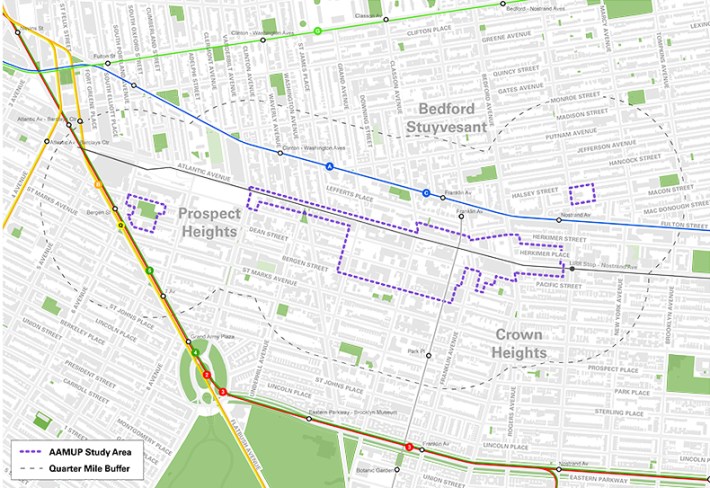
Following the implementation of the Queens bus system redesign, the MTA is developing a redesign of the Brooklyn Bus Network, and currently soliciting comments on a series of proposed new routes. One promising proposal in the plan is to take buses off residential Bergen and Dean streets — where, because of their width, buses are frequently blocked by double-parked cars. In the current proposal, buses west of Washington Avenue would be moved to wider, mixed-use Atlantic Avenue.
This is a good start; the approach should continue east of Washington Avenue to, at a minimum, provide convenient and accessible bus service to the Atlantic Avenue Mixed-Use Plan.
But transformational opportunities for existing residents and new, mixed-use development can only come from a quick, reliable transit line connecting the Atlantic Avenue Mixed-Use Plan area, the Atlantic Avenue transit hub, the burgeoning medical district serving hundreds daily at the foot of Atlantic, and the notoriously difficult to access Brooklyn Bridge Park.

And, perhaps even more important, a continuation of the same line south to Red Hook would form the spine of new transit-oriented neighborhoods from the Columbia Street Waterfront to Red Hook, the planned Brooklyn Marine Terminal and even the East River ferries, finally providing much-needed connections to these transit deserts.
The Atlantic Line would be a big plan, implemented in phases, and paid for by the increase in value along its length. Rather than blindly supporting all projects, let’s advocate for infrastructure that best serves the long-term interests of our city. By building consensus on what a shared vision for a successful and accessible city looks like, we can make sure that what we advocate for does, in fact, move us toward that vision.
